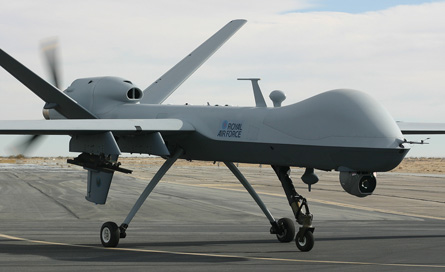The UK Royal Air Force's deployment of the General Atomics Aeronautical Systems Predator B/Reaper unmanned air vehicle has been a "success story", according to a senior officer from the service's 39 Sqn.
Reaper air vehicles have flown "many thousands of hours" since entering RAF use on 23 October 2007, and have achieved a high level of reliability while flying daily over the last year, the officer says. Only necessary engineering activities have seen the type grounded, and then only for a "handful of days".
 |
|---|
© General Atomics Aeronautical Systems |
"Thanks to 39 Sqn there are fewer bad guys around, I'll leave it at that," the senior officer told the Shephard UV Europe conference in Newport, Wales on 22 July.
RAF Reapers now carry the same weapons load as US Air Force MQ-9s, providing 16h endurance with a combat load of four AGM-114 Hellfire air-to-surface missiles and two 226kg (500lb) precision-guided bombs.
The aircraft use their infrared and low-light television sensors in combination with data fusion "to great effect", but its synthetic aperture radar's ground moving target indication capability has been little used, the officer says.
However, techniques to use the SAR payload's change detection function, which can spot topological differences that could indicate the placement of an improvised explosive device, are being developed by 39 Sqn, with some interest from the US Air Force.
The RAF controls its Reaper UAVs over Afghanistan from Creech AFB, Nevada. Its 39 Sqn is meanwhile diminishing its footprint on the USAF's MQ-1 Predator A fleet to focus on Reaper operations.
Source: Flight International























